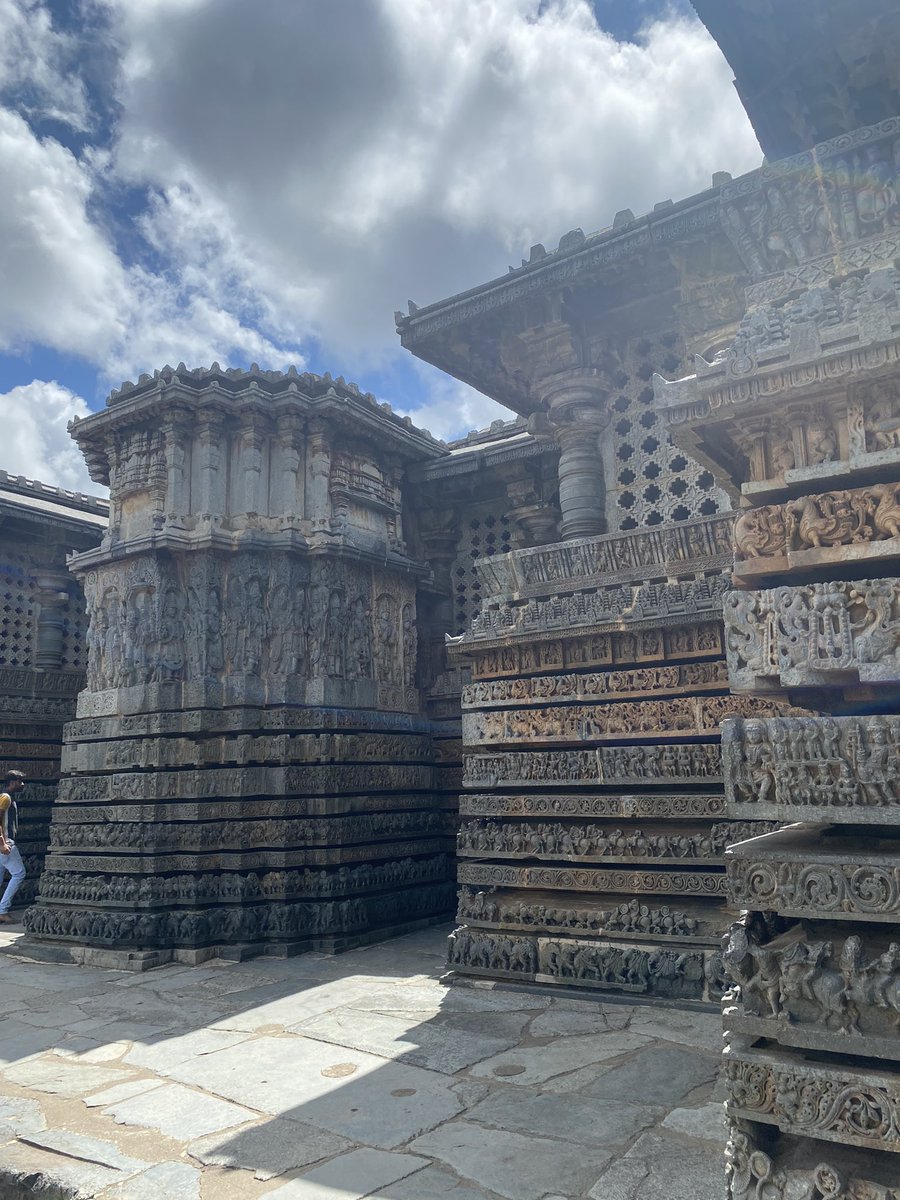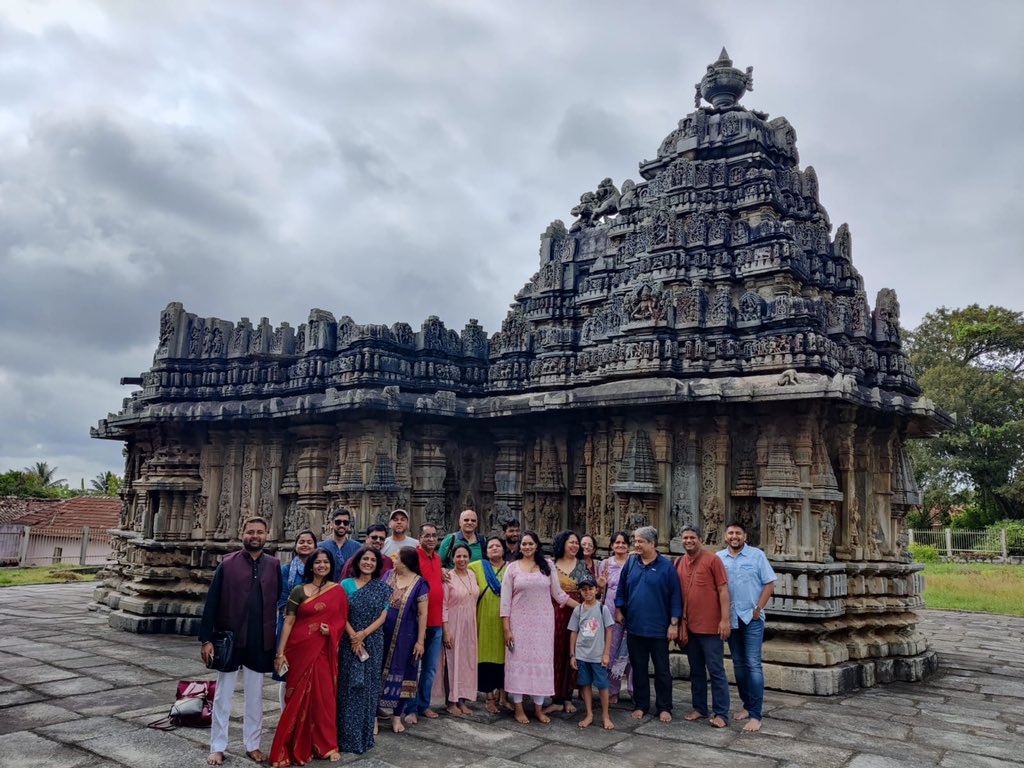
We’re going to be posting pictures from our first batch of Anveṣi’s Karnataka chapter in this thread!
Journey with us as we travel westward towards the beautiful Karnataka coast visiting gorgeous temples!
Journey with us as we travel westward towards the beautiful Karnataka coast visiting gorgeous temples!

Day 1: Chennakeśava Temple at Belur, Karnataka is one of the largest and oldest of the Hoyaśala temples and has had active worship for over 800 years even after extensive destruction during the time of the Sultanate.
#temples #history


#temples #history



The gorgeous symmetry of the Hoysaleswara Temple, Halebidu! The grandest of the Hoysala temples ever built, featuring almost all the deities of the entire Hindu pantheon, arranged in the most spectacular display of symmetry, mathematical precision, and magnificent aesthetics. 





Kedareshwara Temple, Halebidu: The stunning stellate star shape of this temple is a sight to behold, and every niche is arresting and captivating.
@PankajSaxena84 took us though the architecture, significance and history of the major Hoysala temples we visited on Day 1.


@PankajSaxena84 took us though the architecture, significance and history of the major Hoysala temples we visited on Day 1.



On Day 2 of our Anveṣi trip and we started the day at the Nageshvara-Chennakesava Temple at Mosale! A gorgeous set of Śaiva and Vaiṣṇava shrines that exemplify the Hoysala style in the same complex. 





Our team bonding with the amazing cohort of passionate temple travellers! @PankajSaxena84 @priya_27_ @Reenrags @akshaystates @SatyajeetOjha6 



Day 2: We started the day at the Nageshvara-Chennakesava Temple at Mosale! A gorgeous set of Śaiva and Vaiṣṇava shrines that exemplify the Hoysala style in the same complex. 

Day 3 began at the Veera Narayana Temple at Belavadi, where we got to see first hand what a living temple means, invoking a deity inside a temple through ritual; and the sacrifice it takes for the archakas to continue their heriditary tradition unperturbed for centuries. 

We had darśan of the gorgeous Hoysala style Yōga Narasimha, Venugopala and Veera Narayana; and we witnessed an entrancing abhiṣeka for Yoga Narasimha performed by the heriditary pradhāna archaka Prashantji. 



• • •
Missing some Tweet in this thread? You can try to
force a refresh










